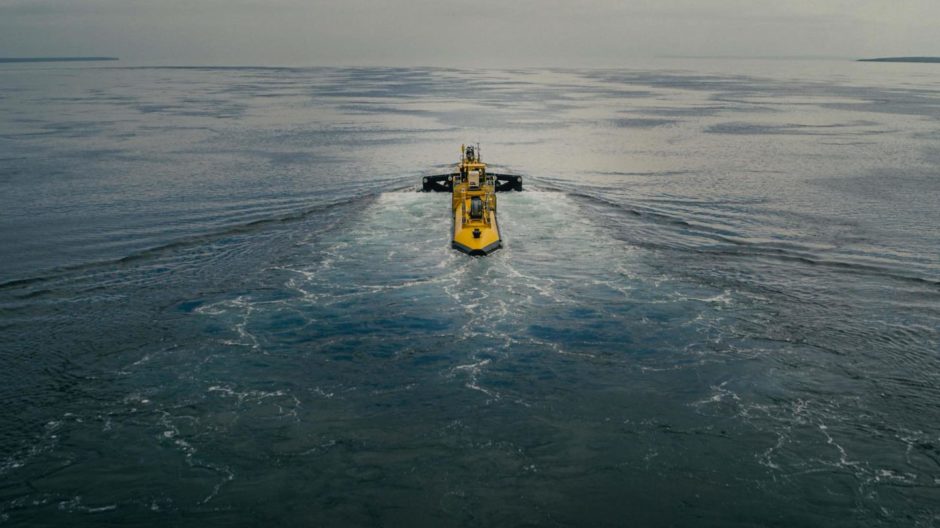
Whether it’s the perennially windy North Sea, the clockwork tidal streams that rush past our islands or the contentious black gold that still resides beneath our territorial waters, Scotland’s energy sector has always had the potential to benefit from its accident of geography.
This Pangean legacy hasn’t always guaranteed positive outcomes, but the Scottish government certainly isn’t backward about extolling the potential of Scotland’s current advantages, particularly in wind. Ahead of the (delayed) Energy Strategy due to be released this summer, industry and local communities are waiting to see if there is substance behind the soundbites, and it feels like now is the time to be bold.
The political or regulatory oversight of energy projects in Scotland can be bewildering. At a glance, energy policy is reserved to Westminster, but planning rules and consenting is devolved to Holyrood.
The grid in Scotland is operated by Scottish Power Energy Networks and Scottish and Southern Energy Networks but regulated at a UK level by Ofgem.
And that’s even before you get on to the new roles allocated in the latest Scottish government reshuffle.
So, in a period of tight budgets what could this strategy achieve, what remit does it really have and, by extension, what impact could it have on the Scottish market-within-a-market?
Cohesion is key
Firstly, if it is to be successful, the strategy must bring together enterprise and funding bodies, Scottish political leaders and their portfolios and UK counterparts. A cohesive energy strategy could allow the likes of the Scottish National Investment Bank and Scottish Enterprise to fill crucial gaps in private funding and be more confident in making longer term investments that align with their respective missions.
Stability and consistency are vital as the energy sector usually operates in generational timescales that run counter to short-term policymaking, but in our small nation a cohesive longer-term direction should be possible. Given the overlaps between UK and Scottish policy in this area – and this may be very wishful thinking – a commitment to real co-operation with UK counterparts would bolster confidence, especially for those with cross border operations.
This becomes even more important if a victorious UK Labour government lives up to its commitment to put Scotland at the heart of its own under-pressure energy strategy.
Secondly, Scotland has a real advantage in a few key areas like tidal stream energy and hydrogen, but the conversion of this head-start is not inevitable; it requires sustained support and improved understanding. We have huge tidal stream resources, and a growing number of home-grown companies that could deliver a truly domestic supply chain.
But other nations are snapping at our heels. So far, the UK government has shown most headline leadership in this area with the implementation of a tidal ringfence in previous CfD rounds, but it would be a tragedy if a lack of associated skills and funding assistance from Scottish government prevented some of these home-grown companies reaching true scale.
It’s a similar story with hydrogen. The idea of exporting green hydrogen to the continent may be seductive, but without real effort to understand the pressing needs of Scotland-based hydrogen leaders, existing progress could be squandered. The apparent disappearance of the Emerging Energy Technologies Fund is of particular concern in this area.
Thirdly, and this may be the toughest of all, the strategy must grasp the thistle of Scotland’s onerous planning and consenting rules. Projects simply take too long to progress and, in some areas – like community benefit for offshore wind – the potential for divergence in upcoming guidance between Scotland and England could disadvantage Scotland. In a market as small as the UK, ‘incidentals’ can have differential impacts on project location.
The same geography that drives Scotland’s renewables potential also makes it scenic. Engaging and understanding local communities must not be lost amongst any changes, but a clear national mission on renewables, with accompanying communications efforts, could relight Scotland’s entrepreneurial fires and help put projects in context within the global drive towards net zero.
To make a real difference in getting projects greenlighted, the strategy could allocate additional resource into planning teams to speed up internal processes and put new response time or streamlining obligations on government-linked statutory consultees.
Commitment to can-do
Sticking to three headline points is almost impossible. Much more could be said on seeking a grown-up conversation with Westminster counterparts on grid requirements and transmission network use of system (TNUoS) charges that unfairly penalise the remote Scottish projects that add resilience to future renewable capacity.
Or on quitting the political point-scoring approach to key transitory sites like Grangemouth and seeking audacious solutions that draw in private capital, rather than running it out of town.
Or on enticing the electrical engineers and other key skills that are desperately in demand at present.
This long-awaited strategy can’t be a recumbent celebration of Scotland’s notional resource. It can be confident enough to champion what the Scottish government can do, rather than what it cannot.
Too often, renewable projects are given lip-service when politically convenient, but the delivery of them is not truly understood. This must change. With the strategy being drafted, now is the moment for companies, technologies and communities to re-make their cases.
An audacious, long-term and properly funded energy strategy would signal true commitment, rather than entitlement, from a Scottish government actively supporting Scotland’s current and emerging capabilities to deliver a just green transition.
Tom Gillingham is a Partner at Charlotte Street Partners.
Recommended for you

 © Supplied by Orbital Marine Power
© Supplied by Orbital Marine Power